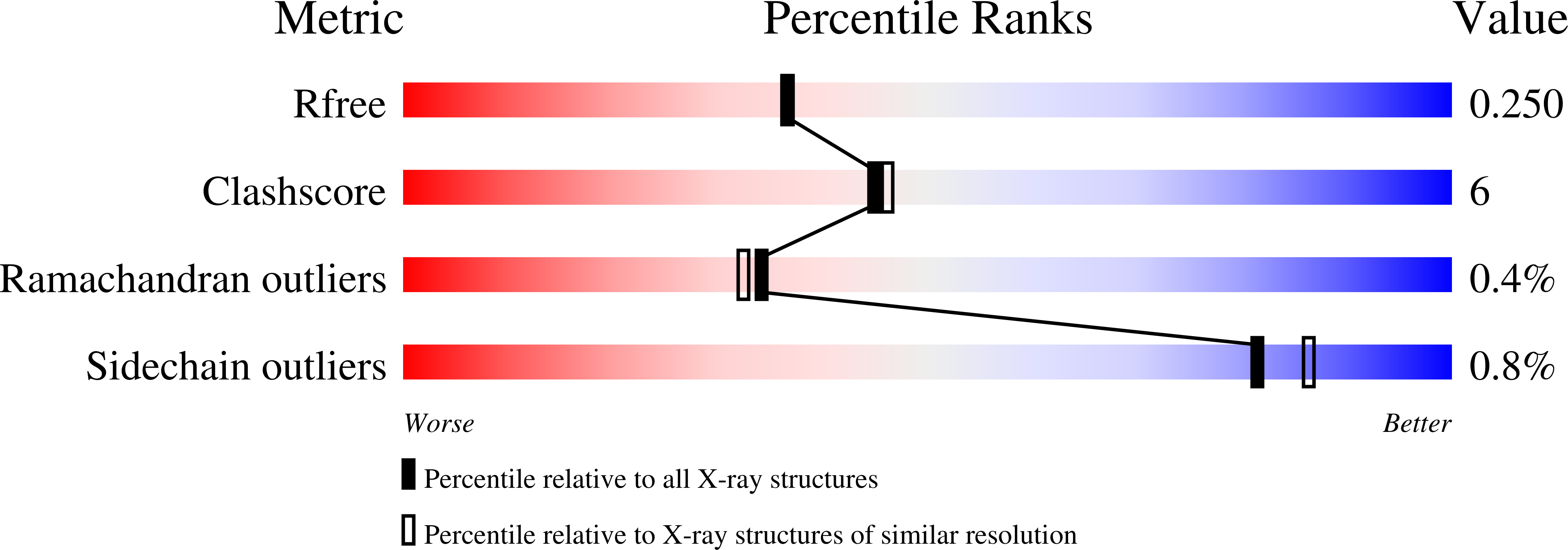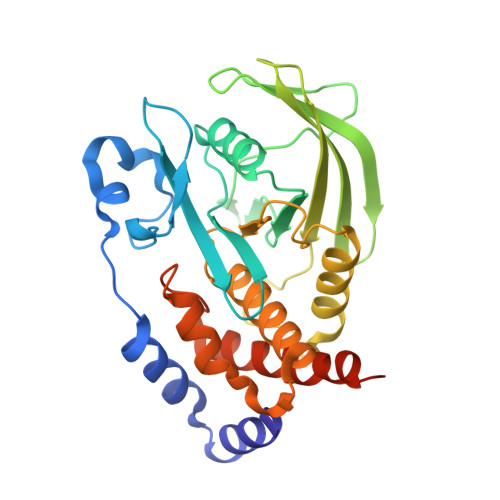Uncovering the Molecular Interactions in the Catalytic Loop That Modulate the Conformational Dynamics in Protein Tyrosine Phosphatase 1B.
Cui, D.S., Lipchock, J.M., Brookner, D., Loria, J.P.(2019) J Am Chem Soc 141: 12634-12647
- PubMed: 31339043
- DOI: https://doi.org/10.1021/jacs.9b04470
- Primary Citation of Related Structures:
6OL4, 6OLQ, 6OLV, 6OMY, 6PFW, 6PG0, 6PGT, 6PHA, 6PHS, 6PM8 - PubMed Abstract:
Active-site loops are integral to the function of numerous enzymes. They enable substrate and product binding and release, sequester reaction intermediates, and recruit catalytic groups. Here, we examine the catalytic loop in the enzyme protein tyrosine phosphatase 1B (PTP1B). PTP1B has a mobile so-called WPD loop (named for its three N-terminal residues) that initiates the dephosphorylation of phosphor-tyrosine substrates upon loop closure. We have combined X-ray crystallography, solution NMR, and pre-steady-state kinetics experiments on wild-type and five WPD loop mutants to identify the relationships between the loop structure, dynamics, and function. The motions of the WPD loop are modulated by the formation of weak molecular interactions, where perturbations of these interactions modulate the conformational equilibrium landscape. The point mutants in the WPD loop alter the loop equilibrium position from a predominantly open state (P185A) to 50:50 (F182A), 35:65 (P188A), and predominantly closed states (T177A and P188A). Surprisingly, there is no correlation between the observed catalytic rates in the loop mutants and changes to the WPD loop equilibrium position. Rather, we observe a strong correlation between the rate of dephosphorylation of the phosphocysteine enzyme intermediate and uniform millisecond motions, not only within the loop but also in the adjacent α-helical domain of PTP1B. Thus, the control of loop motion and thereby catalytic activity is dispersed and resides within not only the loop sequence but also the surrounding protein architecture. This has broad implications for the general mechanistic understanding of enzyme reactions and the role that flexible loops play in the catalytic cycle.
Organizational Affiliation:
Department of Chemistry , Yale University , New Haven , Connecticut 06511 , United States.
















